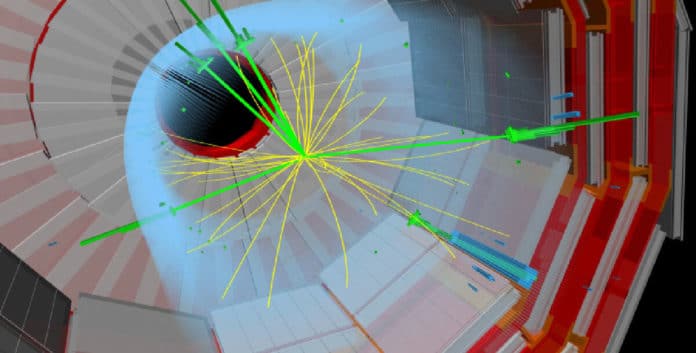Now, there is much information available on how Universe works. However, there are still some significant mysteries that remain unsolved, such as the nature of dark matter and origin of gravity.
A discovery comes out by Caltech physicists and their colleagues that will probably take physics beyond its current understanding of the world.
Physicists used Large Hadron Collider (LHC) at the European Organization for Nuclear Research (CERN) in Geneva, Switzerland, the largest and most powerful particle accelerator in existence, and its Compact Muon Solenoid (CMS). They observed very rare events producing three massive force carriers.
Those three events are the simultaneous production of three W or Z bosons, subatomic “mediator particles” that carry the weak force—one of the four known fundamental effects—which is responsible for the phenomenon of radioactivity and an essential ingredient in the sun’s thermonuclear processes.
The W and Z bosons are similar to each other in that they both carry the weak force but are different in that the Z boson has no electric charge. The existence of these bosons, along with other subatomic particles like gluons and neutrinos, is explained by what is known as the Standard Model of particle physics.
The events producing the trios of bosons occur when intense bunches of high-energy protons that have been accelerated to nearly the speed of light are brought into a head-on collision at a few points along the circular path of the LHC.
When two protons collide, the quarks and gluons in the protons are forced apart, and as that happens, W and Z bosons can pop into existence; in sporadic cases, they appear as triplets: WWW, WWZ, WZZ, and ZZZ. Such triplets of W and Z bosons are only produced in one out of 10 trillion proton-proton collisions.
These events are recorded using the CMS, which surrounds one of the collision points along the LHC’s path. These events are 50 times rarer than those used to discover the Higgs boson.
Harvey Newman from Caltech said, “With the LHC creating an enormous number of collisions, we can see things that are very rare, as the production of these bosons.”
There is a possibility of self-interaction between W and Z bosons to allow W and Z bosons to create still more W and Z bosons. These may manifest themselves as events with two or three massive bosons. Again, this creation is rare, so the more bosons that are produced, the less frequent the production happens. The production of two massive bosons has previously been observed and measured with excellent precision at the LHC.
Newman said, “The creation of these bosons was not the specific goal of the experiment. By collecting enough data, including many events with boson triplets and other rare events, researchers will be able to test the Standard Model’s predictions with increasing precision. They may eventually find and be able to study the new interactions that lie beyond it.”
“We know from observing the rotation and distribution of galaxies that there must be dark matter exerting its gravitational influence, but dark matter doesn’t fit into the Standard Model. There is no room in it for dark particles, nor does it include gravity, and it simply does not work at the energy scales typical of the early Universe in the first moments after the Big Bang. We know that there is a more fundamental yet-to-be-discovered theory than the Standard Model.”
The next three-year experimental run, scheduled for 2021–24, is already being prepared. At the end of that run, the equipment will be upgraded to increase its data-collection capacity 30-fold.
